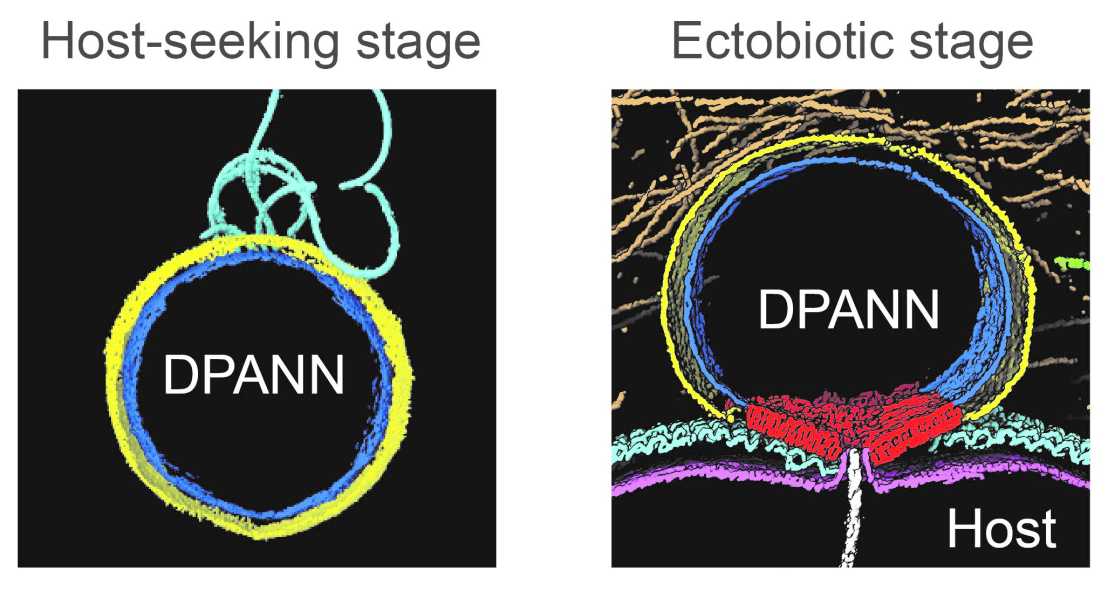A recent "ISME journal" paper by the Pilhofer lab (IMBB) in collaboration with the Albers lab (Molecular Biology of Archaea at University of Freiburg) discovered distinct stages in the life cycle of ectosymbiotic DPANN archaeon Nanobdella aerobiophila.

Archaea are ubiquitous microorganisms whose evolution shaped the biosphere of Earth. Their evolutionary paths are truly fascinating. A great example is an ectosymbiotic lifestyle which is found among DPANN archaea. These microorganisms evolved an ability to colonize the cell surface of other archaea and presumably consume molecules from them. However mechanistic aspects of these intercellular interactions remain largely unknown despite apparent significance of the ectosymbiotic lifestyle for evolution and ecology of archaea.
Researchers at IMBB and University of Freiburg applied high-temperature live-cell imaging and cryo-electron tomography to the unique ectosymbiotic archaeon Nanobdella aerobiophila. They discovered that this microorganism has two distinct stages in its life cycle. The host-seeking stage features unattached cells that possess archaella and exhibit swimming motility, an activity that has not been reported for DPANN before. The ectobiotic stage features cells that develop an elaborate attachment organelle which establishes the tight connection between DPANN and host cells and likely controls molecular transport. These findings set the stage for further research in the biology of ectosymbiotic interactions among archaea.
Link to the paper in external page"ISME Journal".






